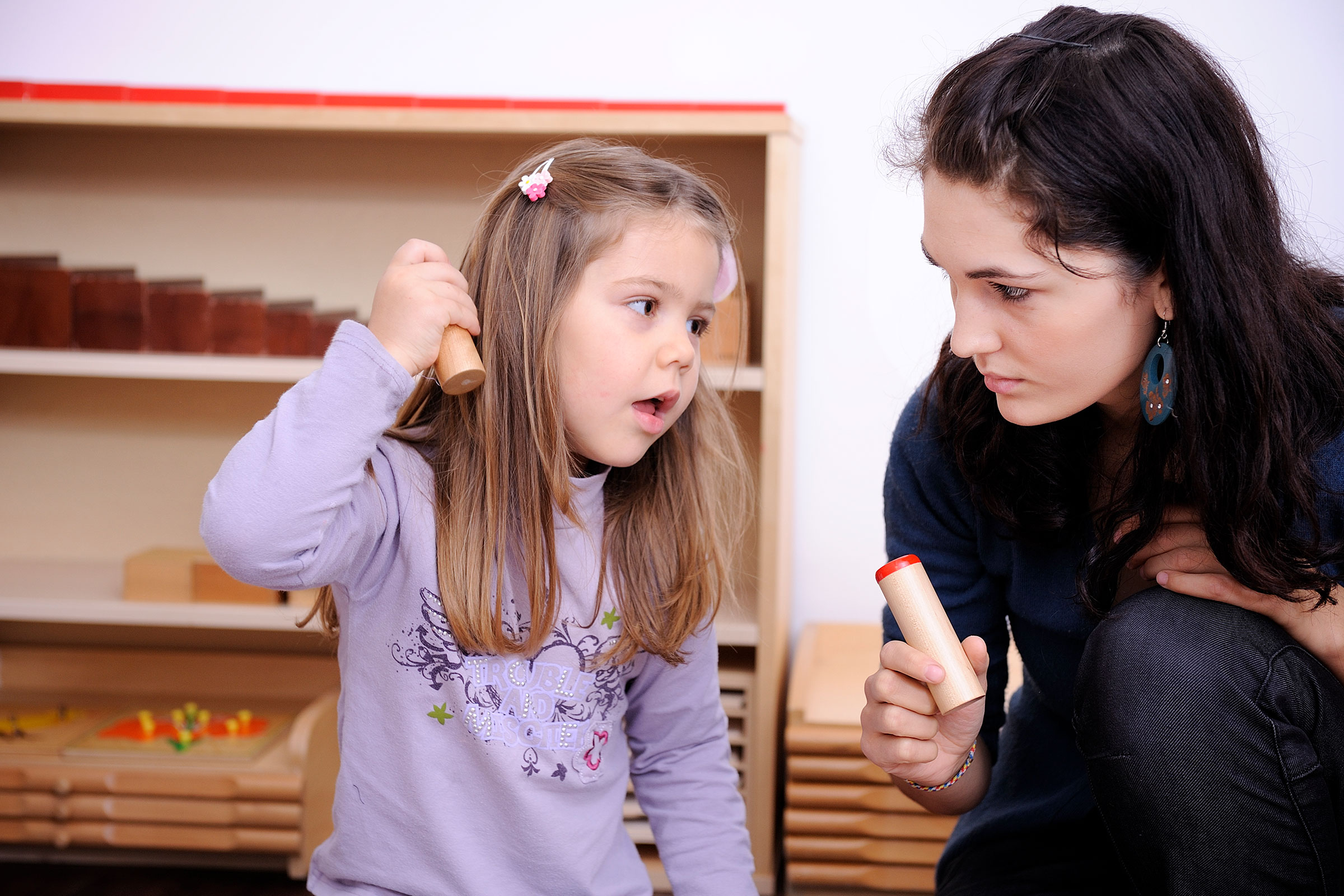There is much research that supports embodied learning – learning that takes place via bodily experiences.
The Montessori sensorial materials are a great example of embodied learning. A child learns many, many concepts through using various materials. Montessori used the term, ‘materialized abstraction’ to refer to concrete materials which express an abstract concept. This concrete material allows a child to manipulate and repeat work with abstract concepts. For example, to learn to discriminate musical sounds, one octave of the musical scale (from middle c to the next higher c) is represented in a series of bells which are played, listened to, matched to an identical bell, and gradually placed in a correct gradation. The names of the notes are given. Later a child is shown how to write those notes and then how to read those notes and play them on the bells. Sound is an abstraction put into a physical form which then allows the child many manipulative possibilities.
There are a variety of materials, each dealing with a particular sense perception made concrete, that allows a child to form, via their own experience manipulating these materials, an embodied understanding of various sensory experiences. Think of any sensory concept, e.g., smell, taste, length, colour, etc. How can a child manipulate and experience such a concept? There has to be some concrete material in which the abstraction is embodied. A child can then manipulate, repeat, order, and classify these sensory impressions. In Montessori sensorial materials there is the isolation of one sensory concept, allowing the child to focus on one concept at a time. There is only one variable in the material – the concept being focused on. These experiences allow the child to gain a different level of knowledge than just being told some things are hot, cold, blue, long etc.
